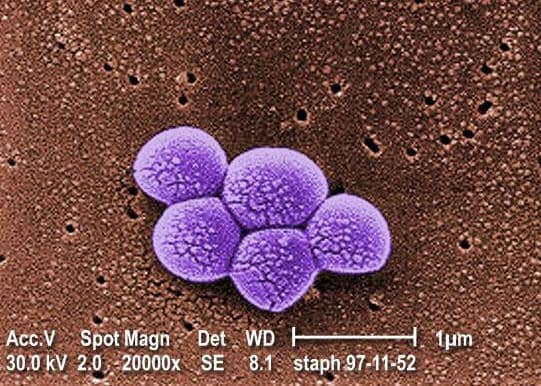Federal officials warned Tuesday that “nightmare bacteria” — including the deadly superbug that struck a National Institutes of Health facility two years ago — are increasingly resistant to even the strongest antibiotics, posing a growing threat to hospitals and nursing homes nationwide.
Thomas Frieden, director of the Centers for Disease Control and Prevention (CDC), said at a news conference: “It’s not often that our scientists come to me and say we have a very serious problem and we need to sound an alarm. But that’s exactly what we are doing today.”

He called on doctors, hospital leaders and health officials to work together to stop the spread of the infections. “Our strongest antibiotics don’t work, and patients are left with potentially untreatable infections,” he said.
Although the bacteria, known as Carbapenen-Resistant Enterobacteriaceae, or CRE, haven’t spread to the wider community — like some other germs — they are more dangerous, said Frieden, who described them as a “triple threat.”
First, the bacteria are resistant to all or nearly all antibiotics, even those of last resort, he said. Second, they kill up to half of patients who get bloodstream infections from them. And third, the bacteria can transfer their antibiotic resistance to other bacteria within the family, potentially making other bacteria untreatable, as well.
For example, carbapenem-resistant Klebsiella, which caused the NIH outbreak, “can spread the genes that destroy our last antibiotics to other bacteria, such as E. coli, and make E. coli resistant to antibiotics also,” Frieden said.
E. coli is the most common cause of urinary tract infections in healthy people.
In 10 years, the percentage of Enterobacteriaceae resistant to antiobiotics increased almost fourfold, to 4.2 percent in 2011 from 1.2 percent in 2001, according to data reported to CDC. And the strain that caused the NIH outbreak has increased sevenfold in the past decade, according to a CDC report issued Tuesday.
During the first half of 2012, almost 200 hospitals and long-term acute-care facilities treated at least one patient infected with these bacteria. The CDC did not have statistics for fatalities.
Enterobacteriaceae are a family of more than 70 bacteria, including E. coli, that normally live in the digestive system. Over time, some of these bacteria have become resistant to a group of antibiotics known as carbapenems, often referred to as last-resort antibiotics. During the past decade, CDC tracked one type of CRE from a single health-care facility to facilities in at least 42 states, according to a CDC news release.
Only six states — Tennessee, Minnesota, Colorado, Wisconsin, Oregon and North Dakota — require hospitals and health-care facilities to report CRE infections to state health departments…
Read more
READ MORE SCI-TECH NEWS AT: 21st Century Wire Sci-Tech
–














